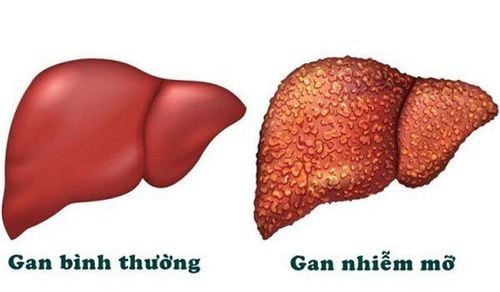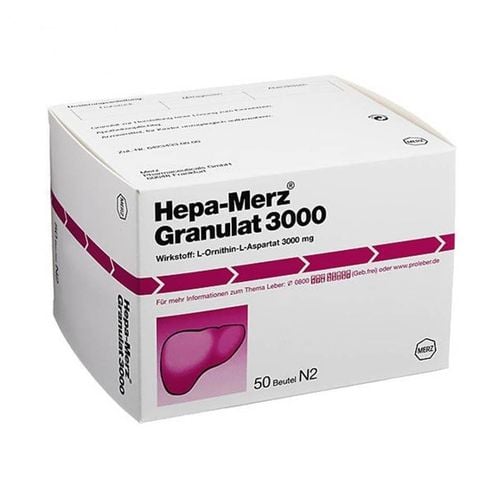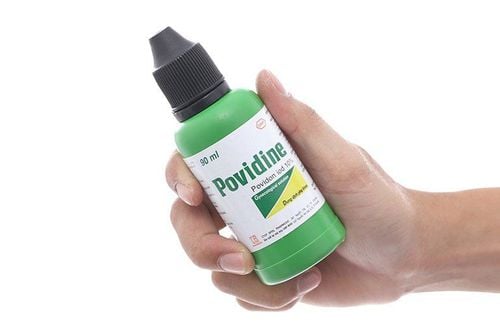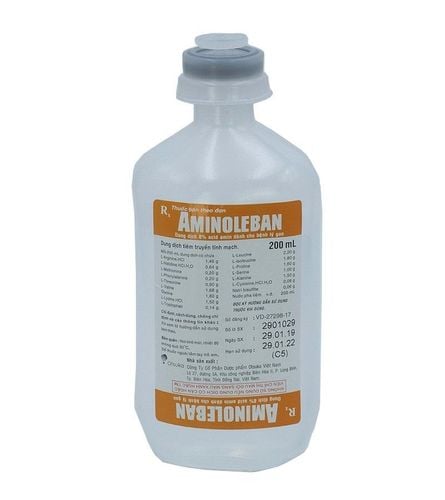Aminoleban is formulated as an intravenous infusion solution or oral powder. The doctor will provide the appropriate medication for each patient based on the formulation and intended use. While using Aminoleban, patients must closely monitor their body's reactions and follow the doctor's recommendations.
1. What is Aminoleban?
Aminoleban 200ml belongs to the gastrointestinal pharmaceutical group, providing essential nutrients for patients with liver failure. Currently, Aminoleban is available in two main forms:
- Oral powder: Fine white powder that dissolves easily in water with high protein content, with a BCAA/AA ratio of 45%.
- Intravenous fluid: A transparent solution, free from visible particulates, and has undergone sterilization according to the Ministry of Health's standards.
Aminoleban 200ml is available in the following packaging:
- For intravenous administration: 200ml or 500ml plastic bottles.
- For oral administration: 50g powder packets.
The product packaging usually clearly states the brand name, formulation information, and the primary design colors are white and bright orange.
2. Ingredients and Uses of Aminoleban
2.1. Ingredients of Aminoleban
Although commonly referred to as Aminoleban, the main ingredients in each formulation differ slightly:
- Aminoleban intravenous infusion 200ml and 500ml: Contains amino acids such as L-arginine.HCL, L-histidine.HCL.H2O, L-phenylalanine, L-methionine, L-threonine, Glycine, L-valine, L-lysine.HCL, L-leucine, L-tryptophan, L-isoleucine, L-serine, L-proline, L-cysteine.HCL.H2O, L-alanine, Sodium bisulfite, and water for injection. These amino acids can be easily distributed in the body from 6 to 72 hours.
- Aminoleban oral powder ingredients: Includes vitamins, minerals (vitamin A, C, E, vitamin B1, B6, magnesium, zinc, sodium phosphate, potassium, chloride), L-isoleucine, Maltodextrin, and L-valine. Additionally, the powder contains rice oil, carbohydrates, sweeteners, orange flavor, and Sodium caseinate.
2.2. Uses of Aminoleban
According to the manufacturer Otsuka JSC, the main uses of Aminoleban 200ml intravenous infusion are:
- Helps quickly improve the coma grade for patients with hepatic encephalopathy due to chronic liver disease or liver failure.
- Helps reduce blood ammonia levels and supports the improvement of neurological function.
- Effectively adjusts amino acid disorders for patients with liver failure.
- Provides essential nutrients for patients with liver failure.
For Aminoleban oral powder, the uses include:
- Supplementing vitamins and minerals, fats, and proteins for patients with liver/kidney weakness.
- Helps adjust the imbalance of important amino acids in the body.
3. Indications and Contraindications for Aminoleban
3.1. Indications for Aminoleban
Aminoleban 200ml and oral powder are commonly indicated for the following cases:
- Intravenous infusion: Used for patients with chronic liver failure experiencing hepatic encephalopathy or encephalopathy due to other causes.
- Oral powder: Used for patients with body weakness due to liver/kidney issues.
3.2. Contraindications for Aminoleban
Contraindications for Aminoleban include:
- Patients with a history of allergy or hypersensitivity to any of the drug's ingredients.
- Patients with severe heart/kidney failure.
- Patients with water-electrolyte metabolism disorders.
- Patients with abnormal amino acid metabolism due to non-liver-related issues.
- Contraindicated for pregnant women.
4. Dosage and Administration of Aminoleban
4.1. Dosage of Aminoleban
The dosage for each formulation of Aminoleban differs:
- Intravenous infusion: Infuse 500 – 1000ml per session. The dosage can be adjusted based on the patient's health condition, weight, and age.
- Oral powder: 1-3 sachets of Aminoleban should be taken daily, either between meals or before bedtime.
4.2. Administration of Aminoleban
Here are the specific instructions for each formulation of Aminoleban:
- Intravenous infusion: The medication is administered directly into the body through an intravenous (IV) line. It can be combined with other compatible solutions as directed by the doctor.
- Oral powder: Dissolve one 50g sachet of Aminoleban in 180ml of warm water (approximately 50°C). Wait for the powder to dissolve completely and drink the solution.
5. Precautions When Using Aminoleban
Patients should be cautious of the following when using Aminoleban:
- Only use Aminoleban when prescribed by a doctor, and avoid self-medication. Always check the expiration date and the color of the infusion solution before use.
- Be cautious when infusing Aminoleban in elderly patients due to significantly reduced kidney and liver function.
- Patients with congestive heart failure, severe acidosis, dehydration, and weakness should be cautious when using Aminoleban.
- Since Aminoleban contains chloride and sodium in addition to amino acids, patients need to be closely monitored for electrolyte balance when using large doses of Aminoleban.
- Always closely monitor the body's reactions when using Aminoleban to detect any issues promptly.
- When using Aminoleban for children, reduce the dose accordingly.
- Sterilize patients using appropriate methods to avoid cross-contamination.
- Warm the infusion solution to near body temperature when infusing in a cold environment.
- Use Aminoleban for a single infusion only; discard any remaining solution if not fully infused.
Precautions for using Aminoleban in pregnant or breastfeeding women:
- Although amino acids are safe and necessary in many cases, some methods of providing them may pose risks. Pregnant women should use Aminoleban 200ml and Aminoleban oral powder only with a doctor's approval after carefully considering the risks and benefits.
- Additionally, Aminoleban 200ml can be excreted in breast milk, so breastfeeding women should be cautious when using this drug. If the benefits outweigh the risks to the child, women can use the drug as prescribed.
During treatment with Aminoleban, patients may experience some unwanted side effects, including:
- Chest pain
- Nausea, vomiting
- Palpitations
- Metabolic acidosis if Aminoleban is infused rapidly or in large quantities
- Rash
- Fever
- Chills
- Vascular pain
- Headache
The side effects of Aminoleban can progress to serious complications, threatening the patient's life, so patients need to be extremely cautious when using it. Notify the doctor immediately if any of the symptoms listed above occur after using Aminoleban.
Aminoleban may interact with other medications, increasing the risk of side effects or reducing the efficacy of the active ingredients when used in combination with certain other preparations. Before using Aminoleban, patients should provide all information about the medications or supplements they are using to the doctor to exclude the possibility of interactions.
To arrange an appointment, please call HOTLINE or make your reservation directly HERE. You may also download the MyVinmec app to schedule appointments faster and manage your reservations more conveniently.








